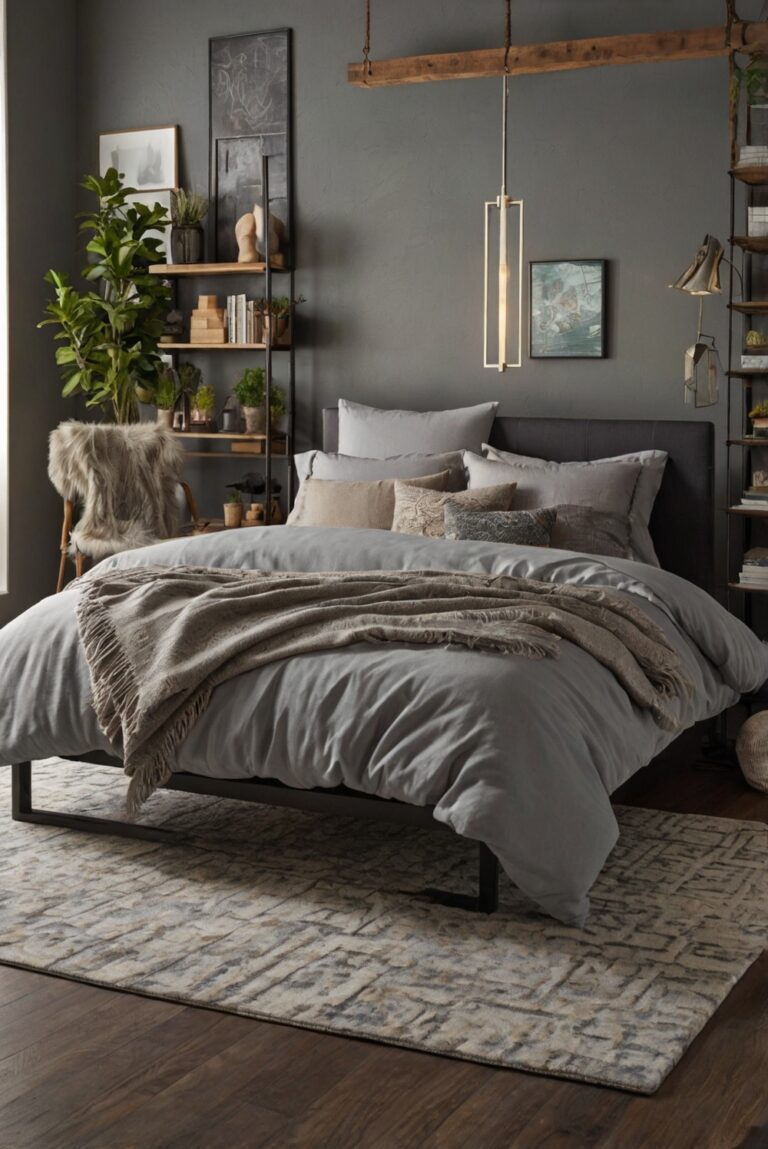Learn expert tips on selecting the perfect pillows to match your sleeping style and enhance your bedroom decor with this daily routine for interior designers.
How to Select the Right Pillows for Your Sleeping Style?
To choose the perfect pillows for your sleeping style, consider the following tips. For back sleepers, opt for medium support pillows to keep your head and neck aligned. Side sleepers should go for firm pillows to support the neck and shoulders. Stomach sleepers benefit from soft, low-loft pillows to prevent neck strain. Memory foam or latex pillows are excellent choices for those who suffer from allergies. Make sure to replace your pillows every 1-2 years for optimal comfort and hygiene. Remember, the right pillows can greatly enhance your sleep quality and overall well-being.
Understanding Different Sleeping Styles:
Before selecting the right pillow for your sleeping style, it’s essential to understand the different sleeping positions and their impact on your body. The three main sleeping styles are:
Back Sleepers:
Back sleepers should look for a pillow that provides adequate support for the neck and head while maintaining the natural curvature of the spine. A medium-firm pillow with a slight loft is ideal for back sleepers to prevent neck strain.
Side Sleepers:
Side sleepers need a pillow that fills the space between the ear and the mattress to keep the spine aligned. A firm pillow with extra loft can help support the neck and prevent shoulder pain for side sleepers.
Stomach Sleepers:
Stomach sleepers require a softer, flatter pillow to avoid straining the neck and back. A thin pillow or no pillow at all is recommended for stomach sleepers to maintain a neutral spine alignment.
Factors to Consider When Selecting a Pillow:
When choosing the right pillow for your sleeping style, consider the following factors:
1. Pillow Fill:
The fill material of the pillow plays a crucial role in providing comfort and support. Some common pillow fill options include memory foam, down alternative, latex, and buckwheat. Choose a fill material that complements your sleeping style and preferences.
2. Pillow Loft:
The loft of the pillow refers to its height or thickness. Back sleepers may benefit from a medium loft, while side sleepers typically require a higher loft to maintain proper spinal alignment. Stomach sleepers should opt for a low loft pillow to prevent neck strain.
3. Pillow Firmness:
The firmness of the pillow determines its level of support. Back sleepers usually prefer a medium-firm pillow, while side sleepers may opt for a firmer pillow. Stomach sleepers need a soft pillow to prevent neck discomfort.
4. Pillow Size:
Choose a pillow size that matches your body frame and bed size. Standard, queen, and king sizes are common options, but you can also find specialty pillows in various shapes and sizes to suit your preferences.
5. Pillow Cover:
Consider the pillow cover material for breathability and hypoallergenic properties. Cotton, bamboo, and polyester pillow covers are popular choices that help regulate temperature and keep allergens at bay.
Testing the Pillow:
Once you’ve selected a pillow based on your sleeping style and preferences, it’s essential to test it out before committing to it. Lie down on the pillow in your preferred sleeping position and assess its comfort and support. If the pillow feels too firm, too soft, or lacks adequate support, consider trying a different pillow until you find the perfect match.
Consulting a Healthcare Professional:
If you experience persistent neck pain, headaches, or discomfort while sleeping, consider consulting a healthcare professional for personalized recommendations. A physical therapist, chiropractor, or orthopedic specialist can help assess your sleeping habits and provide guidance on selecting the right pillow to improve your sleep quality and overall well-being.
1. What are the different types of pillows available for different sleeping styles?
There are various types of pillows designed to cater to different sleeping styles. For side sleepers, a firmer and thicker pillow is recommended to keep the neck aligned with the spine. Back sleepers may benefit from a medium-firm pillow that supports the natural curve of the neck. Stomach sleepers should opt for a softer, flatter pillow to prevent neck strain. Additionally, memory foam pillows contour to the shape of the head and neck, providing personalized support for all sleeping styles.
2. How do I determine the right pillow height for my sleeping style?
The right pillow height is crucial for proper spinal alignment during sleep. To determine the ideal pillow height, consider your sleeping position. Side sleepers typically require a higher pillow to fill the gap between the head and shoulders. Back sleepers should choose a medium-height pillow that supports the natural curve of the neck. Stomach sleepers need a lower pillow to prevent strain on the neck. It is essential to test different pillow heights to find the most comfortable and supportive option for your sleeping style.
3. What materials should I look for in a pillow for my sleeping style?
When selecting a pillow for your sleeping style, consider the materials used in its construction. Memory foam pillows are excellent for contouring to the shape of the head and neck, providing personalized support. Latex pillows are durable and hypoallergenic, making them ideal for allergy sufferers. Down pillows offer a luxurious feel and excellent softness, while polyester pillows are affordable and easy to maintain. Choose a pillow material that aligns with your comfort preferences and supports your sleeping style.
4. Are there any specific features I should look for in a pillow for my sleeping style?
When choosing a pillow for your sleeping style, look for specific features that enhance comfort and support. For side sleepers, consider a pillow with a gusseted design to maintain loft and prevent flattening. Back sleepers may benefit from a pillow with a contoured shape that cradles the neck and head. Stomach sleepers should opt for a thin, soft pillow to minimize neck strain. Additionally, cooling gel-infused pillows can regulate temperature and promote a more restful sleep experience for all sleeping styles.
5. What are some tips for maintaining and prolonging the life of pillows for different sleeping styles?
To prolong the life of your pillows and ensure optimal comfort, it is essential to follow proper maintenance techniques. Regularly fluff and rotate your pillows to maintain their shape and support. Use pillow protectors to shield against dust mites, allergens, and spills. Wash pillows according to the manufacturer’s instructions to keep them clean and fresh. Replace pillows every 1-2 years to prevent the accumulation of dust and bacteria. By following these tips, you can extend the lifespan of your pillows and enjoy a comfortable night’s sleep tailored to your sleeping style.







